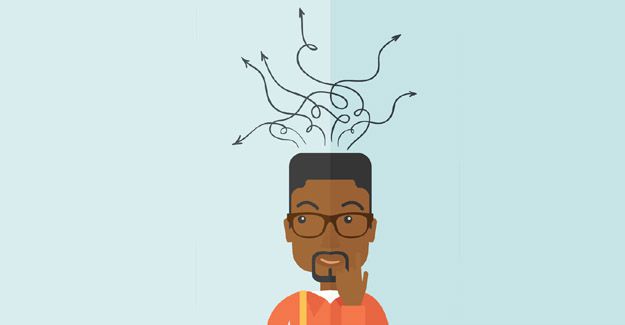Dr Justin Cohen of Australia's Ehrenberg-Bass Institute for Marketing Science shared insights from research into marketing with Spark Media's guests. If you've not factored mental availability into your brand messaging, read this now!
On Tuesday, 10 October 2017, Spark Media held the Cape Town version of its Mental Availability breakfast talk at the River Club, ending off the talk's road show across SA.
Attendees were treated to a full English breakfast while Gill Randall, joint CEO of Spark Media, explained that they’ve been Ehrenberg-Bass Institute (EBI) members for the last 15 years.
She then introduced Dr Justin Cohen of Australia’s EBI for Marketing Science. It’s the world's largest centre for research into marketing, with over 50 professors that use old-fashioned science and advanced techniques to look at what people do rather than what they say they do. It's evidence of what actually happens in the real world and provides a framework for really effective marketing. The Institute is named after two world-famous (now deceased) marketing academics, Andrew Ehrenberg – known for the Ehrenberg law of buying frequencies and Frank Bass – known for the Bass Diffusion Model.
The importance of evidence-based marketing
Cohen began by explaining that the EBI is focused on generating new insights into marketing. With clients like Airbnb and Uber, their work is aimed at establishing benchmarks through evidence-based marketing and helping brands grow through both science of research and creativity of execution. They search for predictable patterns and implications based on replications across different conditions so that marketers can make smarter decisions when allocating budget. Bruce McColl, recently retired CEO of Mars Inc and now the EBI’s first industry professor explained evidence-based marketing as follows:
If you don’t understand evidence-based marketing principles, then you are probably spending a lot of money on brand activities that don’t work
Mental availability: what it is and why it mattersCohen explained that brands largely compete on both mental and physical availability, an often-unexplored aspect of marketing. Cohen says this is because marketing initially grew from economics, psychology and sociology research into relationships and that this lens or way of thinking was transferred to marketing. That’s why why we believe:
- Attitudes drive buying behaviour
- Attitudes are stable and enduring
- Brands have personalities
- People have relationships with brands
- Brand loyalty is important and must be cultivated
- People are highly rational as consumers
- We must persuade consumers that our brand is unique
- We must segment markets
- Brand love is the holy grail.
Unfortunately, the actual evidence doesn't necessarily match this theory, but mental availability can explain this.
It's the propensity of the brand to be noticed in buying situations, the chance that it is thought of or noticed, which is often confused with top-of-mind awareness. Cohen explains:
You can be the fastest sprinter in the world, but if you don't qualify for the Olympics, you can't compete for the gold medal.
To understand how this works, Cohen shared the basics of
associative network theories of memory, first developed by Aristotle and studied for centuries since. This is the idea that we have concepts or nodes of memory or collections of information, which are linked through associations or cues that go both ways and are used to retrieve those memories. The retrieval depends on the number and freshness of those links, relative to those of competitors.
I say 'purple', you think...
This is why people say 'purple' when told the cue 'Cadbury,' but won’t necessarily say ‘Cadbury’ when you give them the cue ‘purple’. Category entry points then are the associations people have that bring them into your brand’s category. So marketers need to understand what evokes memories of their specific brands, based on consumer needs, benefits, and purchase situations. Brands also need to realise that their actual competition is much bigger than that of their direct category competitors – for example, when in need of a quick ‘comfort purchase’ some think of chocolate, others wine and others coffee, so brands need to understand the most salient things that bring people into the category.
Four top reasons to factor in mental availability
- It's the first big step in the brand being chosen – consumers’ choice narrows from what is available to what is considered to what is bought. Most brands fail to be bought because consumers don't even consider them, whether FMCG or high involvement one-off purchases. People tend to go back to what's already in their mind. So it's about winning that race and being in as many races as possible
- Our memories aren't perfect and we’re predictably fickle. Sadly our brains don’t function like computers and we don't make rational decisions each time we’re faced with a choice. Brand retrieval from memory means the brand must be linked to the retrieval cue through the category entry points, with strong and fresh links. The degree of competition also plays a role, as more competitors linked diminishes your brand’s chance of retrieval. Brand association links are also unstable, so different people seeing the same cue or the same people seeing different cues will retrieve different brands each time. This makes sense as everyone has different exposure to advertising, but when we consider that attitudes are meant to be stable and enduring, we do need to factor in context and occasion.
- Most buyers are infrequent or light buyers of brands. This links to Ehrenberg's Law of Buying Frequencies. It is a constant challenge for existing buyers to think about your brand, and all the more difficult for those that don't purchase your brand.
- We are exposed to roughly 5,000 brand messages per day and it’s quite literally impossible to pay attention to them all. In order to cope, consumers screen out most of the stimuli right in front of them. We also have selective perception, whether consciously or unconsciously. So your creative needs to be designed to break through the clutter and reach the consumers that don't already use your product.
Here's how to develop a strategy that gets consumers to notice and recall your brand when making a purchase decision...
Reminder: Mental availability is the chance that a brand is thought of or noticed in buying situations.
Cohen says to do so by turning mental availability knowledge into action, by focusing on the following four principles:
- Media quality – start with the biggest reach media first in order to increase the chance of reaching as many people as possible, and spread of the advertising. It’s better to reach two people once than to reach one person twice and annoy them, so avoid excessive frequency. Cohen says to build reach across time, and recency matters in recall, so avoid being ‘off-air’. Space out your ad exposure, as people learn better this way. So five times over five weeks is better than five times in the same show.
- Message quality – Is the message likely to be a cue people use to think of your brand? Keep in mind what you are trying to build and what you want people to remember, apart from your branding. The ‘Find your fit’ commercials by Fitbit do a good job of showing what Fitbit stands for and makes those examples across key entry points:
You don't have to change the message in each campaign, but find a new way to say it that still looks like you, like Nando's or Absolut does.
- Creative quality – This is what makes the message more enjoyable. It’s about building attention, as people process ads both rationally and emotionally, so evoking an emotional response makes the ad processing take place on a deeper level. The creative shouldn’t overwhelm the brand though, and great creatives can't compensate for poor branding. Cohen listed the following as an example of this – you don't know what the ad is for until the very end:
- Branding quality – This is what ultimately increases your brand recall. Is the brand easily identifiable by even the most uninterested viewer? Only those who are exposed to the advertising can be nudged by it. So if you're not advertising or communicating to your customers, you are effectively ‘closed for business’ and letting your competitions get in there. It is by far the most important thing to think of, because without branding, your advertising is entertainment. It needs presence or prominence, identity in looking like your brand, and consistency across media and time.
Can the people, you’re paying to reach easily identify your brand from the advertising and recall it when making a purchase decision? If not, your messaging is a waste of money and time and will result in poor mental availability.
Cohen says showing a static brand visual or logo for long periods not as effective, nor is merely saying and not showing it, so going for verbal without visual presentation. The big 'branding bang' at the end only isn’t a good idea either, as first-time viewers won’t know to associate your brand with what they see on screen and you may lose their attention.Mental availability analysis of a Super Bowl ad
Cohen says to consider the below ad for the Merc AMG Roadster:
It does well on the media quality aspect, having been screen during the Super Bowl – that’s a huge amount of eyeballs, but also amongst the most expensive TV spots, so requires big return on spend. It’s also a win on creative quality, as it’s engaging and entertaining, but the focus is more on the gag than on building the brand into the ad. On message quality, there’s focus on the pleasurable ride aspect – but is that the most likely reason people purchase the car? The ad doesn’t do well on branding quality throughout, leaving that to the final very well branded five-second bang.
The challenge for any campaign is thus making sure evidence is used to remove ineffective practice and eliminate duds, but Cohen concluded that mental availability isn't everything. How your brand performs on physical availability and how easy you are to buy from can nullify the sale, no matter the mental availability of your brand.
Follow @SparkMediaSA and @EhrenbergBass on Twitter for more on the topic.


















































